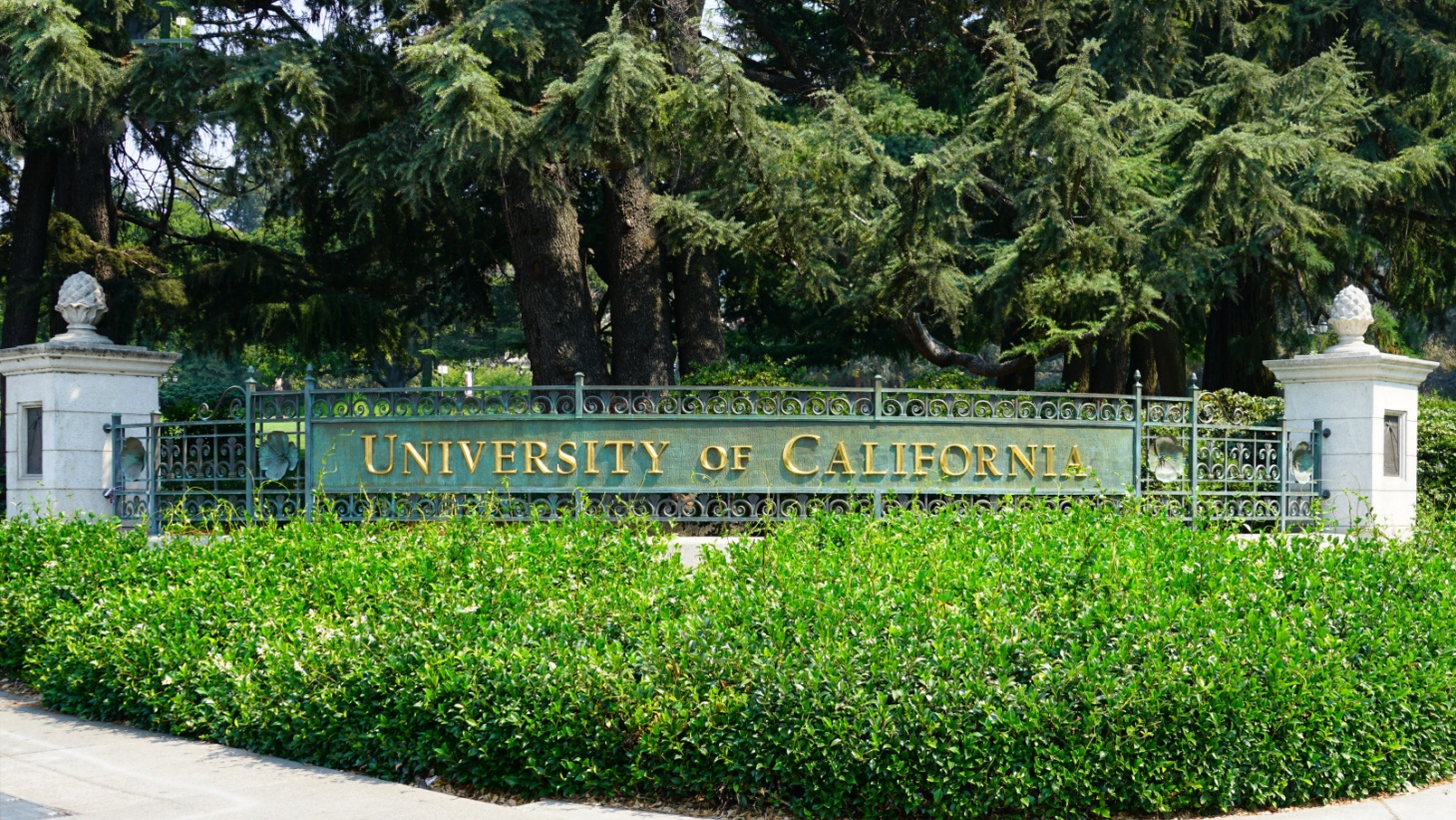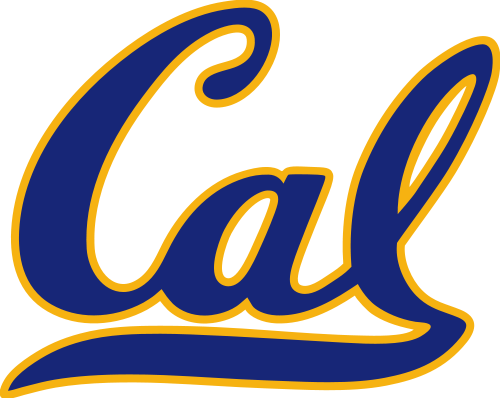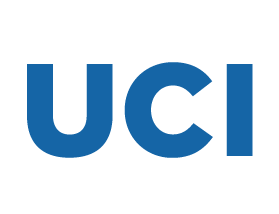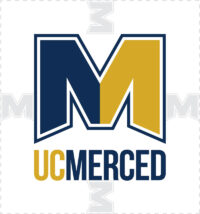The Best UC Schools Ranked – 2024
April 5, 2024

In 2024, college-bound California residents are at once the luckiest and unluckiest students in the world. On one hand, the vast array of world-class public universities at a bargain price is unmatched anywhere else in the country. However, such exceptional institutions at a bargain price have, not surprisingly, attracted a deluge of applicants in recent years. As such, both in-state and out-of-state students might be wondering which campuses they should set their sights on. Accordingly, our list of the Best UC Schools Ranked will help you choose the campus(es) that will best suit your unique academic and career goals.
Best UC Schools Ranked
Before diving into our list of the best UC schools, let’s review our methodology as well as how to use this list. In ranking the nine undergraduate degree-granting University of California schools, we want to make crystal clear that all nine are fantastic schools that provide an excellent education as well as solid postgraduate outcomes for their alumni. If you’re an in-state student, you’ll also be receiving that education at a price that will set you up for a low-debt future.
How to Decide Which UCs to Apply To
When deciding which UCs to apply to, there are a number of factors to consider. You’ll want to weigh these factors with your personal interests, goals, and preferences in mind. For example, if you’ll be pursuing a popular major offered on all campuses, such as biology, you may choose to look more closely at available research facilities, professors, and postgraduate outcomes. If you’re dead set on attending a college near the coast, you can immediately rule out Davis and Merced and focus your efforts on Santa Barbara, Santa Cruz, and San Diego. Your priorities may also be different if you are an in-state student who wants to attend a college within a few hours from home or if you are an out-of-state student who is only looking at one or two particular campuses.
Overall, though, you’ll want to take the following factors into account when deciding which campus(es) to apply to:
Selectivity
The percentage of students admitted to the school each year. Highly selective schools typically enroll a high-achieving student population. High achievement (or a reputation for it) can drive positive alumni outcomes, especially in certain areas of study like business or engineering. Here’s a comparison chart of acceptance rates at all nine UCs:
| School | Number of Applicants | Number of Admits | Acceptance Rate |
| UCLA | 145,910 | 12,737 | 9% |
| UC Berkeley | 125,910 | 14,566 | 12% |
| UC San Diego | 130,841 | 32,314 | 25% |
| UC Irvine | 121,095 | 31,181 | 26% |
| UC Davis | 94,635 | 39,601 | 42% |
| UC Santa Barbara | 110,876 | 30,914 | 28% |
| UC Santa Cruz | 68,821 | 43,159 | 63% |
| UC Riverside | 56,938 | 40,054 | 70% |
| UC Merced | 27,184 | 24,016 | 88% |
Acceptance rates can also help you decide how many UCs to apply to. The lower the acceptance rate, the lower the chance you have of gaining acceptance, even if you’re a stellar student. In addition, single-digit acceptance rates place a school firmly in the “wildcard” category (looking at you, UCLA!).
Best UC School Ranked — Continued
Campus Community/Location
California is an enormous state (driving from top to bottom takes nearly 15 hours). Think about the same stretch of states on the East Coast—roughly New Jersey to Florida—and how different a community on Florida’s panhandle is from a neighborhood in Washington, D.C. As such, it’s imperative to take location into account when choosing a campus.
For example, Merced’s rural, Central Valley campus—which also enrolls the smallest number of undergraduates in the UC system—will be night and day from Santa Barbara’s beachside locale and 20,000+ undergrad population. As with any school, we highly recommend making campus visits when possible.
| School | Campus Size | Campus Type | Number of Undergrads |
| UCLA | 419 acres | Urban | 33,040 |
| UC Berkeley | 1,232 acres | Urban/suburban | 32,831 |
| UC San Diego | 1,152 acres | Urban | 33,096 |
| UC Irvine | 1,474 acres | Suburban | 28,661 |
| UC Davis | 5,300 acres | Suburban | 31,797 |
| UC Santa Barbara | 1,000 acres | Beachside, suburban | 23,460 |
| UC Santa Cruz | 2,000 acres | Beachside, suburban | 17,502 |
| UC Riverside | 1,200 acres | Suburban | 22,903 |
| UC Merced | 815 acres | Rural, desert | 8,373 |
Available Majors
Given the immense variability between the nine UC schools, your intended major may have a strong impact on your decision about where to apply. For example, a prospective film or performing arts student might look closely at UCLA while prospective English majors will find a strong academic home at Berkeley. Animal science majors should beeline to UC Davis. Prospective nursing student? You’ll want to target Irvine, Davis, or UCLA. Entomology? UC Riverside.
Let’s look at some notable academic strengths and differences between the UCs:
UCLA: Strong departments include computer science, engineering, film, fine and performing arts, mathematics, and political science. Majors unique to this campus are Disability Studies, Data Theory, and Psychobiology, among others.
UC Berkeley: The computer science, engineering, chemistry, English, psychology, and economics departments receive high marks, as does the Haas School of Business. Several majors unique to Berkeley are Conservation and Resource Studies, Landscape Architecture, and the Management, Entrepreneurship, and Technology Program.
UC San Diego: The computer science and engineering programs have stellar reputations in the corporate and tech communities. Programs in biology, economics, and political science are very strong. Majors that can only be found at UC San Diego include Oceanic and Atmospheric Sciences as well as Nanoengineering.
UC Irvine: The Samueli School of Engineering has an excellent reputation as does the Bren School, the only independent computer science school in the UC system. Programs in public health and biological sciences are top-rated. Majors unique to Irvine include Social Ecology, Quantitative Economics, and Literary Journalism, among others.
Best UC Schools Ranked — Continued
UC Davis: Programs in engineering, computer science, and animal science are nationally renowned. At Davis, you’ll be able to choose from campus-specific majors like Agricultural and Environmental Education, Animal Biology, and Environmental Horticulture & Urban Forestry.
UC Santa Barbara: Nearly one-third of students major in the social sciences; communication, computer science, engineering, physics, environmental science, and the performing arts are the top areas of study. Unique majors include Aquatic Biology, Hydrologic Sciences & Policy, and Zoology.
UC Santa Cruz: CS is one of UCSC’s most respected programs. In addition, they offer the UC system’s only Agroecology, Creative Technologies, and Network and Digital Technology majors, among others.
UC Riverside: Riverside is top-ranked for Entomology and Plant Biology, housed within the excellent College of Natural & Agricultural Sciences. It also has strong programs in business and engineering.
UC Merced: Although UC Merced is the newest UC with the smallest range of majors, their business and engineering programs are strong. They also offer a solid selection of specialized degrees, including a Bioengineering degree with a focus in Biomedical Imaging and Bioinstrumentation and a Data Science and Computing major with a focus in Environmental Systems Science.
Research Facilities/Faculty
All UC institutions are research institutions, but have differing types of facilities and focus areas. Some centers are also multidisciplinary or involve faculty at multiple UC campuses. In addition, there may be specific faculty members that you hope to work with on a particular campus. Some highlights:
UCLA: UCLA has nearly 300 research centers or institutes and receives over $1 billion in research funding per year. It is strong in almost every area. To help match undergrads with research opportunities, two centers are available: one for Humanities, Arts, and Social Sciences and one for the Sciences. Within these centers, various programs, fellowships, and research courses are offered.
UC Berkeley: Ranked as one of the top public research institutions in the world, and a leader in health research. With over 120 research centers available, Berkeley undergrads are highly encouraged to get involved. Moreover, the Office of Undergraduate Research & Scholarships runs a number of programs, including the Undergraduate Research Apprentice Program, Haas Scholars, and the Underrepresented Researchers of Color Program.
UC San Diego: UCSD received nearly $2 billion in research funding last year, and is recognized as a top 20 research university. There are 30 research centers and institutes, with particular strength in STEM and health sciences. In addition, 13 different research programs are offered that cater specifically to undergraduates.
UC Irvine: UCI has over 110 research centers, both school-specific and interdisciplinary. It is well-known for health and cancer research. The Undergraduate Research Opportunities Program helps students find on- and off-campus research projects as well as funding. Ultimately, 60% of students conduct a research project.
Best UC Schools Ranked — Continued
UC Davis: Well-known for medicine, agriculture, and energy, UCD hosts nearly 30 research centers. The Undergraduate Research Office runs six organized campus research programs and 11 partner programs. All in all, 50% of UCI students conduct research or creative projects outside of the classroom.
UC Santa Barbara: At UCSB, there are ten national research institutes and centers and a number of additional research units, including 24 research centers or academic initiatives alone for the humanities and fine arts. It is well known for its research in physics and engineering. 19 undergraduate research programs are available through the Office of Undergraduate Research, and more than half of students pursue research as undergrads.
UC Santa Cruz: Several areas that UCSC specializes in are genomics, astronomy, environmental and social justice law, ocean sciences, technology, biosciences, the arts, humanities, and cancer research. There are over 60 research centers and institutes and dedicated programs for undergraduates. 75% of undergraduates conduct research during their four years.
UC Riverside: UCR is top-ranked for research in entomology, plant & animal sciences, air pollution, and alternative fuels. There are seven main research centers and facilities as well as ten organized campus research programs for undergraduates.
UC Merced: Research strengths include climate change and ecology, solar and renewable energy, water quality and resources, artificial intelligence, and cognitive science, among others. There are 17 research institutes and centers and five core facilities. In recent years, Merced has ranked highly for undergraduate participation in research and creative projects.
Postgraduate Outcomes
While postgraduate outcomes are strong across the board, there is some variability. For example, UCLA grads funnel most heavily into research, finance, computer science, and engineering. 62% of Berkeley grads head into the business sector, with thousands heading to Silicon Valley companies like Google, Apple, and Meta. It’s almost the number-one producer of Peace Corps volunteers. UC Irvine has a very strong reputation for premed while Santa Barbara alumni most often head to the science/research or engineering/computer programming sectors. You can see campus-specific postgrad outcomes within our official list below.
Best UC Schools Ranked — Continued
Cost
If you’re an in-state student, you can go right ahead and ignore the cost factor, as any school in the UC system would be a solid investment even if you received zero aid. If you’re an out-of-state student, though, the answer is a bit more complicated, as the nonresident sticker price is similar to that of many private schools. Depending on how much aid you receive, it may not make sense to attend certain UC institutions, especially if you’re able to receive a better deal elsewhere. In addition, the cost of living is high in California, and some campuses are more expensive than others. Let’s look at the cost differences:
| School | Resident Cost of Attendance | Nonresident Cost of Attendance |
| UCLA | $38,517 | $71,091 |
| UC Berkeley | $48,574 | $82,774 |
| UC San Diego | $31,830 | $64,404 |
| UC Irvine | $40,202 | $72,776 |
| UC Davis | $41,839 | $73,963 |
| UC Santa Barbara | $41,289 | $73,863 |
| UC Santa Cruz | $41,283 | $73,857 |
| UC Riverside | $40,537 | $73,111 |
| UC Merced | $44,010 | $78,210 |
That said, an acceptance to UCLA, Berkeley, or UC San Diego—regardless of intended major—will almost always be worth your money whether you receive aid or not.
How many UC schools should I apply to?
The answer to this question will vary depending on the student. First and foremost, we do not recommend applying to campuses that you will not attend if admitted. Beyond that, in-state applicants who are keen to take advantage of the incredible in-state tuition rate may want to hedge their bets at 3-5 different campuses. Out-of-state applicants, who have slimmer odds of acceptance and higher costs, will want to look carefully at each institution’s programs and costs before applying.
In addition, it should be noted that the top 9% of California residents can bank on an acceptance to at least one UC campus, although it may not be their top choice.
What else should I know about applying to the UCs?
Applying to the UCs involves several different steps. These include completing an application, including an activities list, and writing responses to four UC Personal Insight Questions. Since all UCs are now test-blind, testing is not required or reviewed at any campus. Finally, the UC has an earlier deadline than many other schools: November 30th.
You should also know that you don’t have to fill out a separate application for every UC school. Within the UC application, you’ll simply check which campuses you’d like to send your application to.
UC Trivia—Best UC Schools Ranked
Now that you’ve learned all about the UC campuses, let’s answer your most burning questions in a lightning round:
What UC school is most popular?
Based on the number of applications received, UCLA is the most popular UC school (145,000+ applications!), followed by UC San Diego and UC Berkeley.
Which UC is the most expensive?
UC Berkeley is the most expensive, with an in-state sticker price of $48,574 and an out-of-state sticker price of $88,774. The second-most expensive campus is UC Merced. Their cost of attendance is $44,010 for in-state students and $78,210 for out-of-state students.
How many UC schools are there?
Nine that enroll undergraduates. Technically, though, there are ten if you count UC San Francisco, which only offers graduate programs in health professions and sciences.
Which UC school is the easiest to get into?
Based purely on acceptance rate, UC Merced is the easiest campus to get into. Accordingly, their acceptance rate is 88%.
Which UC school is best for engineering?
Berkeley is often considered to be the best UC school for engineering, followed by UCSD and UCLA.
Which UC school is best for computer science?
UC Berkeley is well-known for its computer science program, followed by UCSD and UCLA.
Which UC school is best for fine and performing arts?
UCLA is often considered to be the best UC school for the fine and performing arts. Berkeley and San Diego are quite strong as well.
Best UC School Ranked — Continued
Which UC is best for pre-med?
Berkeley, UCLA, UC Davis, and UC Irvine all have very strong premed programs.
Which UC is the hardest to get into?
UCLA is the hardest school to get into, with a 9% acceptance rate. It’s followed closely by UC Berkeley, which has a 12% acceptance rate.
Which UC campus is the safest?
UC Riverside, Santa Barbara, and San Diego are generally considered to be the safest UC campuses.
Which UC has the largest campus?
UC Davis has the largest campus size-wise (5,300 acres) while UC San Diego has the largest campus population-wise with 33,096 undergraduates.
Which UC has the smallest campus?
Population-wise, UC Merced has the smallest campus with 8,000 undergraduates—about a third of the size of other UC campuses. Size-wise, UCLA is the smallest at just 419 acres.
Which UC has a reputation as a party school?
With its beach vibes, Santa Barbara is often considered to be the UC system’s top party school.
Now, let’s transition into our official ranking that features academic highlights, professional outcomes, and admissions data. When creating our ranking, we took the following factors into account: selectivity, number of standout academic programs, career services offerings, postgraduate outcomes, and cost.
The Best UC Schools Ranked – 2024

University of California, Berkeley
- Berkeley, CA
Academic Highlights: More than 150 undergraduate majors and minors are available across six schools: the College of Letters and Science, the College of Chemistry, the College of Engineering, the College of Environmental Design, the College of Natural Resources, and the Haas School of Business. Many departments have top international reputations including computer science, engineering, chemistry, English, psychology, and economics. 22% of sections contain nine or fewer students, and over 55% of students assist faculty with a research project or complete a research methods course.
Professional Outcomes: Upon graduating, 49% of Cal’s Class of 2022 had already secured employment, and 20% were headed to graduate school. Business is the most popular sector, attracting 62% of employed grads; next up are industrial (17%), education (8%), and nonprofit work (7%). The median starting salary was $86,459 across all majors. Thousands of alumni can be found in the offices of Google, Apple, and Meta, and 500+ Golden Bears are currently employed by Oracle, Amazon, and Microsoft. The school is the number one all-time producer of Peace Corps volunteers.
- Enrollment: 32,831 (undergraduate); 12,914 (graduate)
- Cost of Attendance: $48,574 (in-state); $82,774 (out-of-state)
- Median SAT: Test Blind
- Median ACT: Test Blind
- Acceptance Rate: 11%
- Retention Rate: 96%
- Graduation Rate: 94%

University of California, Los Angeles
- Los Angeles, CA
Academic Highlights: UCLA offers 125 majors in 100+ academic departments, and more than 60 majors require a capstone experience that results in the creation of a tangible product under the mentorship of faculty members. The most commonly conferred degrees are in the social sciences (25%), biology (16%), psychology (11%), mathematics (8%), and engineering (7%). Departmental rankings are high across the board, especially in computer science, engineering, film, fine and performing arts, mathematics, and political science.
Professional Outcomes: UCLA grads flow most heavily into the research, finance, computer science, and engineering sectors. High numbers of recent grads can be found at Disney, Google, EY, Teach for America, Amazon, and Oracle. Hundreds also can be found at Bloomberg, Deloitte, Mattel, Oracle, and SpaceX. The average starting salary exceeds $55,000. 16% of recent grads enrolled directly in a graduate/professional school, with other CA-based institutions like Stanford, Pepperdine, USC, Berkeley, and Loyola Marymount being the most popular.
- Enrollment: 33,040 (undergraduate); 15,010 (graduate)
- Cost of Attendance: $38,517 (in-state); $71,091 (out-of-state)
- Median SAT: Test Blind
- Median ACT: Test Blind
- Acceptance Rate: 9%
- Retention Rate: 97%
- Graduation Rate: 93%

University of California, San Diego
- San Diego, CA
Academic Highlights: There are 140+ undergraduate majors offered at UCSD, and all students join one of eight undergraduate colleges meant to forge flourishing communities within the larger university. Biology has the highest representation of all majors (19%) followed by engineering (12%), the social sciences (11%), and computer science (9%). UCSD’s computer science and engineering programs have stellar reputations in the corporate and tech communities, and programs in biology, economics, and political science are among the best anywhere.
Professional Outcomes: Employers of recent graduates included the Walt Disney Company, Tesla, NBC Universal, PwC, Northrop Grumman, and EY. More than 1,000 current Google employees are UC San Diego alumni, and Qualcomm, Amazon, and Apple all employ 500+ each. The median early career salary is $65,000 across all majors, placing the university in the top 10 public universities in the country. UCSD also fares well in measures of its return-on-investment potential.
- Enrollment: 33,096 (undergraduate); 8,386 (graduate)
- Cost of Attendance: $31,830 (in-state); $64,404 (out-of-state)
- Median SAT: Test Blind
- Median ACT: Test Blind
- Acceptance Rate: 25%
- Retention Rate: 93%
- Graduation Rate: 88%

University of California, Irvine
- Irvine, CA
Academic Highlights: UCI offers eighty undergrad programs as well as many opportunities for personal connection; 56% of all sections enroll 19 or fewer students and over 60% of students conduct a research project. The most commonly conferred degrees are the social sciences (16%), business (12%), psychology (11%), and biology (9%). The Samueli School of Engineering has a solid reputation as does the Bren School, the only independent computer science school in the UC system. Programs in public health and biological sciences earn very high marks.
Professional Outcomes: Accounting, aerospace, internet and software, K-12 education, real estate, and retail are among the industries attracting the greatest number of Anteaters. Companies employing large numbers of recent grads include Boeing, the Walt Disney Company, Google, EY, and Microsoft. Hundreds of alumni are also found at Kaiser Permanente, Meta, Apple, Edwards Lifesciences, and Deloitte. The median salary is $69,000, with CS grads earning close to $120k right off the bat. UCI has a very strong reputation for premed.
- Enrollment: 28,661 (undergraduate); 7,275 (graduate)
- Cost of Attendance: $40,202 (in-state); $72,776 (out-of-state)
- Median SAT: Test Blind
- Median ACT: Test Blind
- Acceptance Rate: 26%
- Retention Rate: 91%
- Graduation Rate: 87%

University of California, Davis
- Davis, CA
Academic Highlights: UC Davis offers 100+ undergraduate majors across four schools: the College of Agricultural and Environmental Sciences, the College of Biological Sciences, the College of Engineering, and the College of Letters and Science. 50% engage in some type of research/creative project outside the classroom. The areas of study with the largest number of degrees awarded were biology, the social sciences, psychology, and engineering. Programs in engineering, computer science, and animal science are nationally renowned.
Professional Outcomes: Many recent grads found homes at Silicon Valley or other California-based employers. Corporations employing 200 or more Aggies include Genentech, Google, Apple, Cisco, Meta, Oracle, Amazon, Microsoft, Salesforce, and LinkedIn. Ten years out of school, median earnings rise to $112k. Within one year of graduating, 39% of Aggies elect to continue their education; the most popular degrees pursued are master’s, MDs or other health doctorates, law, and MBA/MPA.
- Enrollment: 31,797 (undergraduate); 9,053 (graduate)
- Cost of Attendance: $41,389 (in-state); $73,963 (out-of-state)
- Median SAT: Test Blind
- Median ACT: Test Blind
- Acceptance Rate: 42%
- Retention Rate: 93%
- Graduation Rate: 87%

University of California, Santa Barbara
- Santa Barbara, CA
Academic Highlights: There are 90 undergraduate majors across three schools: the College of Letters and Science, the College of Engineering, and the College of Creative Studies. The social sciences are the most popular area of study, accounting for 27% of the total degrees conferred. Biology (10%), math (9%), and psychology (9%) are next in popularity. The school has highly regarded programs in communication, computer science, engineering, physics, environmental science, and the performing arts. More than half of sections contain fewer than 20 students, and 72% enroll 29 or fewer.
Professional Outcomes: Within six months of earning their diplomas, 84% of grads had found employment. The most popular industries were science/research (16%), engineering/computer programming (14%), business (13%), finance/accounting (11%), and sales (10%). Top employers of recent grads include Google, EY, KPMG, Oracle, Amazon, IBM, and Adobe. Many alumni also can be found at Apple, Meta, Microsoft, and Salesforce. Two years after graduating, UCSB alumni make an average salary of $55k; more than half make $100k by mid-career.
- Enrollment: 23,460 (undergraduate); 2,961 (graduate)
- Cost of Attendance: $41,289 (in-state); $73,863 (out-of-state)
- Median SAT: Test Blind
- Median ACT: Test Blind
- Acceptance Rate: 28%
- Retention Rate: 92%
- Graduation Rate: 86%

University of California, Santa Cruz
- Santa Cruz, CA
Academic Highlights: 73 undergraduate majors are available at UCSC within the following academic divisions: arts, humanities, physical and biological sciences, social sciences, and the Jack Baskin School of Engineering. 75% of undergraduates conduct research during their four years. Biology is the university’s most popular major; 15% of all degrees conferred in 2022 were in this discipline. 14% of degrees were granted in the social sciences, 13% in computer and information sciences, and 12% in psychology. CS is one of UCSC’s most respected programs.
Professional Outcomes: Within three months of earning their degree, 29% of UCSC grads had found employment and 17% started graduate programs. Proximity to Silicon Valley helps open doors to companies like Google, Apple, Meta, Genentech, and Cisco, which all employ over 250 alumni. More than 100 alums can also be found in the offices of Amazon, Salesforce, Microsoft, Adobe, and LinkedIn. Among graduates from the last five years, over half make more than $40k.
- Enrollment: 17,502 (undergraduate); 1,976 (graduate)
- Cost of Attendance: $41,283 (in-state); $73,857 (out-of-state)
- Median SAT: Test Blind
- Median ACT: Test Blind
- Acceptance Rate: 63%
- Retention Rate: 88%
- Graduation Rate: 77%

University of California, Riverside
- Riverside, CA
Academic Highlights: UC Riverside offers 80+ majors across five colleges: the Bourns College of Engineering; the College of Humanities, Arts, and Sciences; the College of Natural and Agricultural Sciences; the School of Business; and the School of Public Policy. Popularity-wise, the greatest number of degrees are conferred in the social sciences (20%), biology (18%), business (14%), psychology (10%), and engineering (7%). 22% of sections enroll fewer than 20 undergrads, and faculty-mentored research opportunities are available for everyone.
Professional Outcomes: Within one year of graduation, 54% of 2022 grads were employed and 15% were pursuing an advanced degree. The most commonly entered industries were education, business, tech, social services, the sciences, and government; the median starting salary was $61k. More than 100 alumni work for major corporations like Kaiser Permanente, Amazon, Wells Fargo, Apple, Microsoft, Meta, and EY. For those who go on to advanced degree programs, the most common disciplines pursued are education, physical/natural sciences, engineering/computer science, health professions, and arts/humanities.
- Enrollment: 22,903 (undergraduate); 3,906 (graduate)
- Cost of Attendance: $40,537 (in-state); $73,111 (out-of-state)
- Median SAT: Test Blind
- Median ACT: Test Blind
- Acceptance Rate: 70%
- Retention Rate: 87%
- Graduation Rate: 76%

University of California, Merced
- Merced, CA
Academic Highlights: Merced offers 24 majors and 25 minors across three schools: the School of Engineering, the School of Natural Sciences, and the School of Social Sciences, Humanities, and Arts. Research is a large part of the Merced experience with opportunities being available even for first-year students. Popularity-wise, the most degrees are conferred in biology (15%), psychology (13%), computer engineering (11%), and mechanical engineering (10%). Nearly 30% of classes enroll fewer than 20 students.
Professional Outcomes: 87% of the Class of 2022 had positive outcomes, with 69% employed and 18% pursuing a graduate or professional degree. Of those employed, the top industries were health care (19%), education (12%), and engineering (12%). Across all graduating years, top employers include UC Merced itself, Amazon, Northrop Grumman, and Kaiser Permanente. Of the 2022 grads who continued their education, 31% pursued a master’s, 16% a professional doctorate, and 14% an academic doctorate.
- Enrollment: 8,373 (undergraduate); 775 (graduate)
- Cost of Attendance: $44,010 (in-state); $78,210 (out-of-state)
- Median SAT: Test Blind
- Median ACT: Test Blind
- Acceptance Rate: 88%
- Retention Rate: 83%
- Graduation Rate: 69%
Best UC Schools Ranked – Additional Resources
Applying to the UCs? You may also benefit from exploring some of our previous blogs:
- When are UC Applications Due?
- UC Essay Personal Insight Questions – Prompts and Tips
- How to Write the UC Activities List
- How to Get Into UCLA
- How to Get Into UC Davis
- How to Get Into UCSB
- How to Get Into UCSD
- How to Get Into UC Irvine
- How to Get Into UC Berkeley


